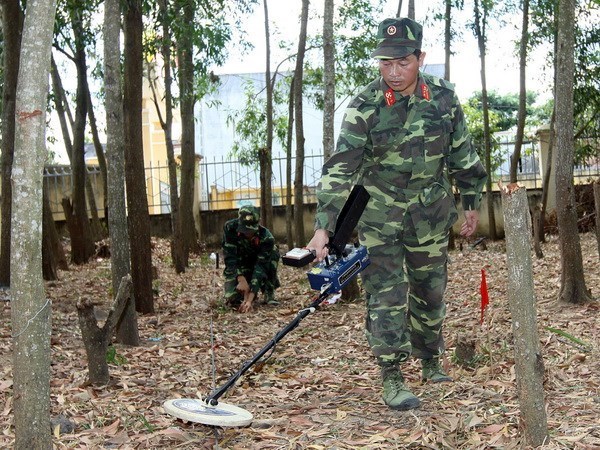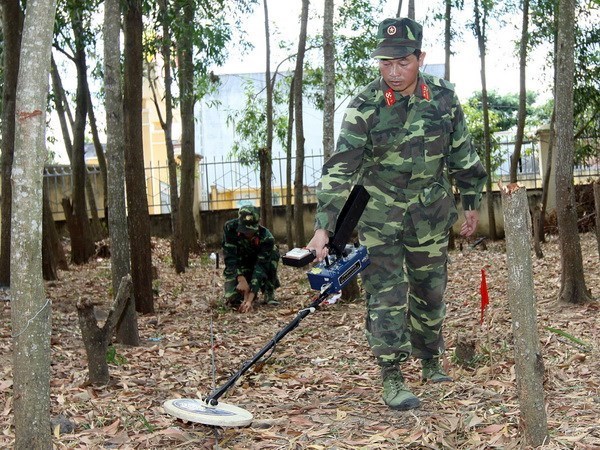



Sappers are
searching for war-left bombs and mines (Source: VNA)
Quang Tri is one of localities most affected by the aftermath of
war, with 81 percent of the province’s total area polluted with unexploded
ordnance (UXO).
Statistics from the provincial centre for overcoming bomb and mine consequences
show that by April 2018, bomb and mine accidents had killed 3,430 people and
injured 5,100 others, including many children.
Demining projects in Quang Tri have been funded by many foreign agencies,
including the foreign ministries of Germany, the US and Norway, the
Federal Ministry of Economic Cooperation and Development of
Germany, the UK’s Department for International Development, Ireland’s
development assistance fund, UNICEF and the US organisation Peace
Trees.
The projects have helped clear 132 million sq.m of seriously polluted areas,
and safely handle more than 650,000 bombs, mines and other UXO.
More than 350,000 people were provided with knowledge and skills to prevent UXO
accidents via the "Mine Risk Education (MRE)” programme.
Local authorities have also paid attention to supporting local victims of
war-era UXO, helping them improve their living conditions and re-integrate
into the community.
Non-governmental organisations have financed the building of 332 humanitarian
houses, and directly aided 215 UXO victims and their families.
Some 1,200 UXO victims who are living with disabilities were provided with
medical examination and prosthetics and other orthopedic instruments, while 50
disabled people and medical workers were trained in community-based
rehabilitation.
Nguyen Duc Thien from the provincial centre for overcoming bomb and mine
consequences said demining projects have contributed to expanding safe
land area for production in the locality.
To improve the work, the locality will set up a mine action centre, he said,
adding that Quang Tri hopes to receive greater support and resources for the
scheme.-
Source: VNA